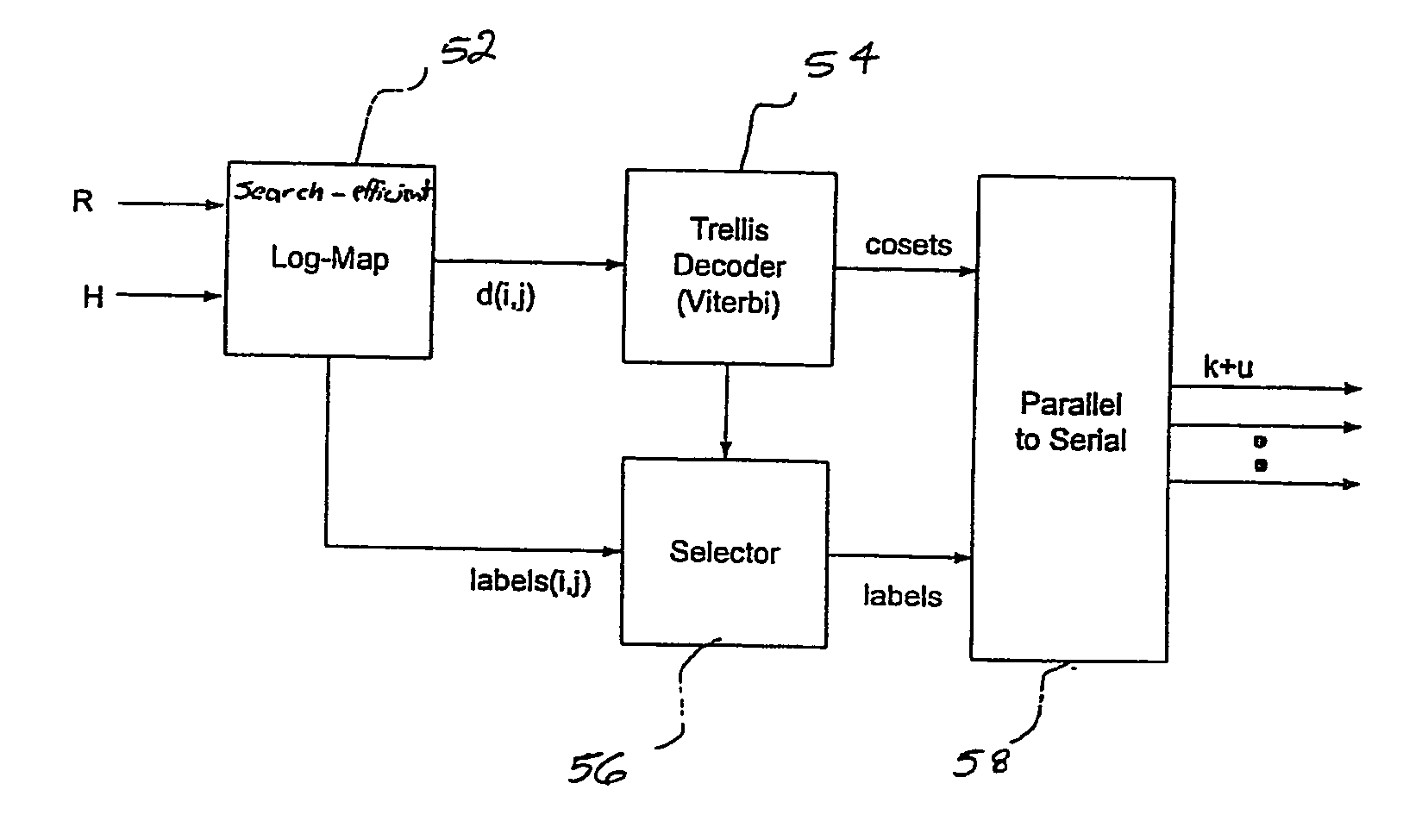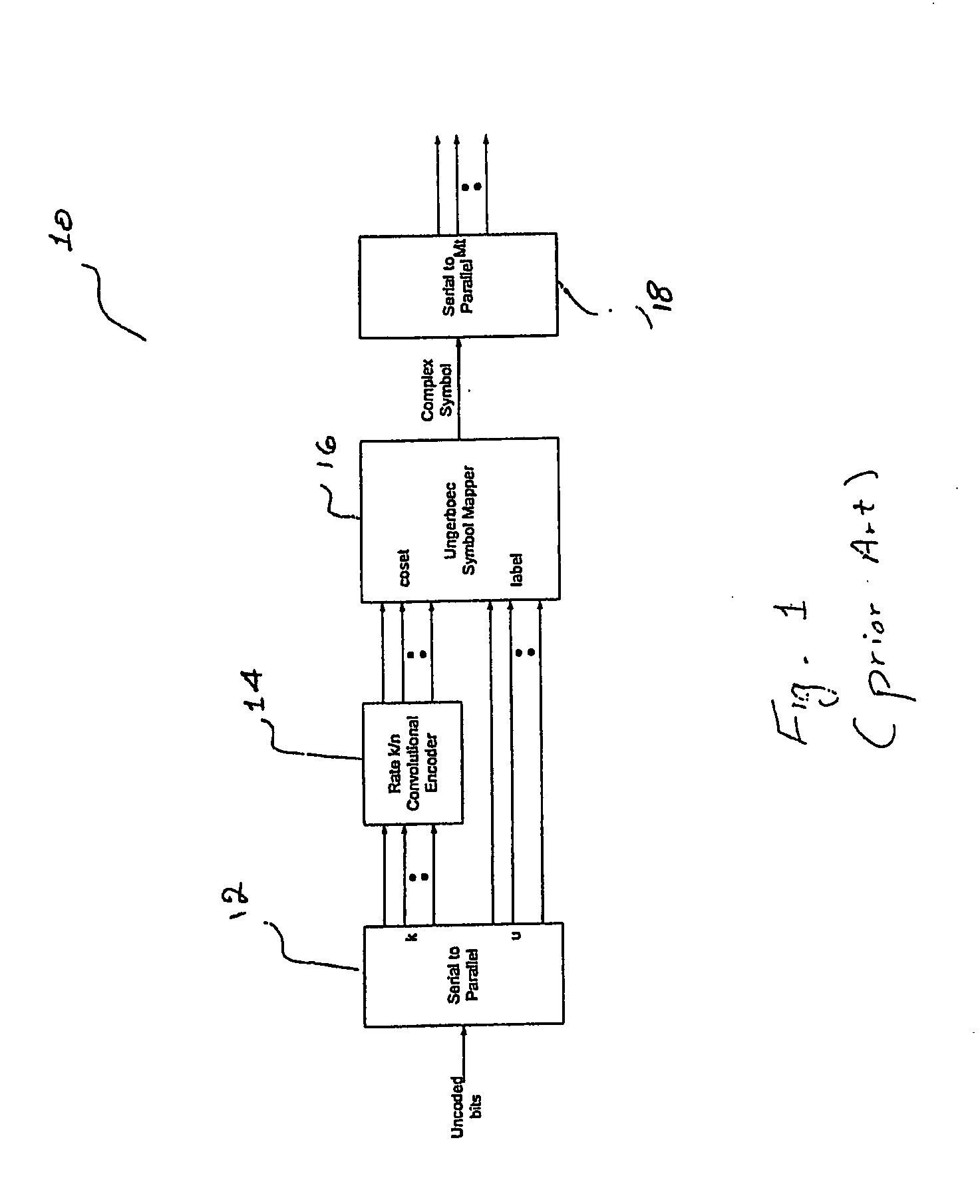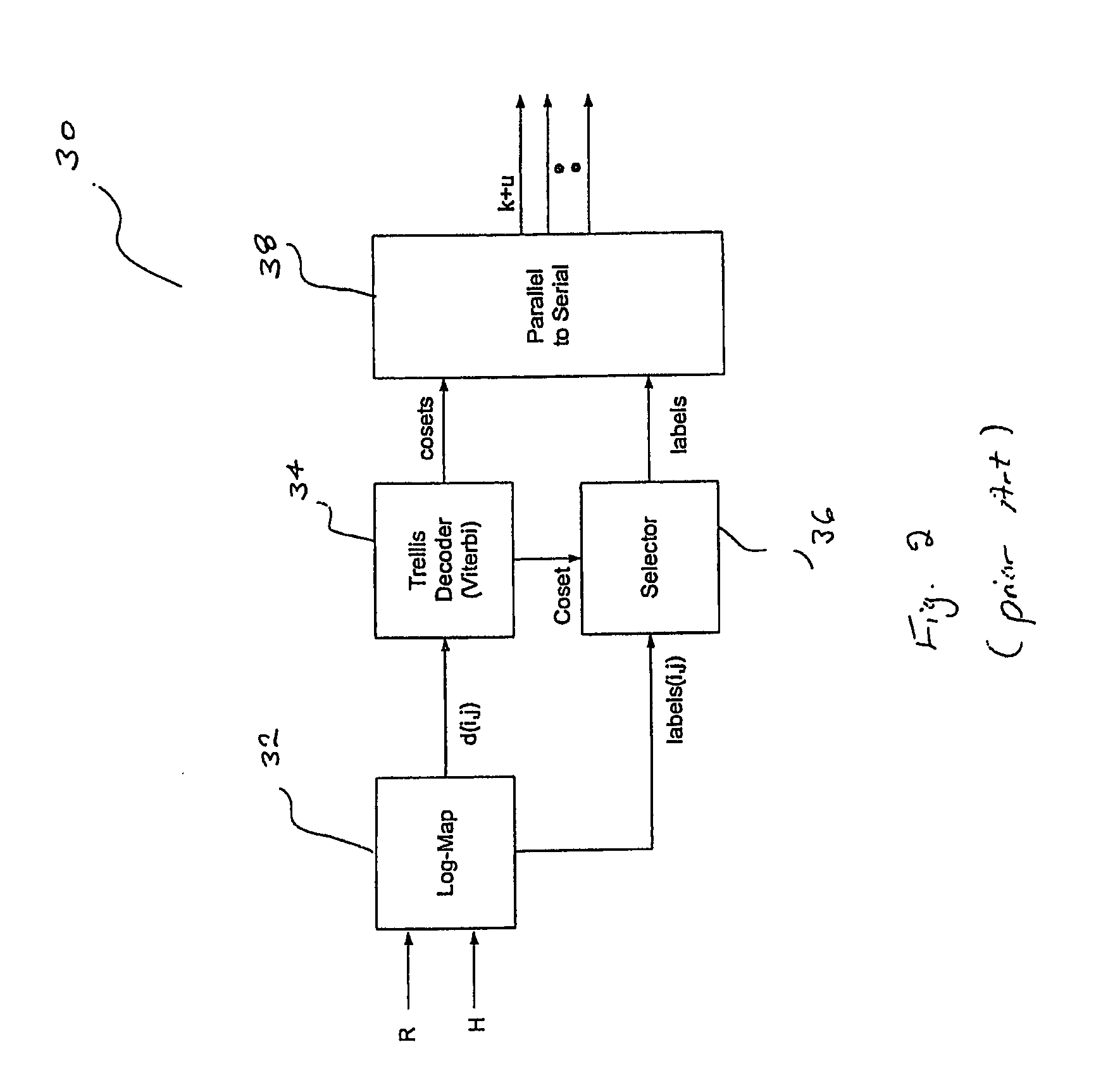Search efficient MIMO trellis decoder
a mimo trellis decoder and search technology, applied in the field of digital communication, can solve problems such as errors, errors introduced, and often caused, and achieve the effect of reducing the error rate of wireless transmission systems, and reducing the error rate of trellis coding, and improving the efficiency of trellis coding
- Summary
- Abstract
- Description
- Claims
- Application Information
AI Technical Summary
Problems solved by technology
Method used
Image
Examples
Embodiment Construction
[0027]FIG. 3 is a simplified block diagram of a MIMO TCM decoder 50, in accordance with one embodiment of the present invention. MIMO TCM decoder 50 includes, in part, a search-efficient Log-MAP decoder 52, a Viterbi decoder 54, a selector 56 and a parallel-to-serial converter 58. MIMO TCM decoder 50 is adapted to decode symbols encoded via, for example, the prior art encoder shown in FIG. 1, and transmitted via a channel with a characteristic estimate matrix H.
[0028] At the transmitting end (not shown), out of every u+k bits, k-bits are encoded by a convolutional encoder that has a code rate of k / n. The n encoded bits are used to select one of 2n cosets, each having two 2u labels. The u unencoded bits are subsequently used to select one of the 2u labels from the selected coset. Each label so selected is a complex number having a real and an imaginary component. The serial bit stream associated with each selected label is converted to Mt parallel bits, and is subsequently transmitt...
PUM
 Login to View More
Login to View More Abstract
Description
Claims
Application Information
 Login to View More
Login to View More - R&D
- Intellectual Property
- Life Sciences
- Materials
- Tech Scout
- Unparalleled Data Quality
- Higher Quality Content
- 60% Fewer Hallucinations
Browse by: Latest US Patents, China's latest patents, Technical Efficacy Thesaurus, Application Domain, Technology Topic, Popular Technical Reports.
© 2025 PatSnap. All rights reserved.Legal|Privacy policy|Modern Slavery Act Transparency Statement|Sitemap|About US| Contact US: help@patsnap.com



